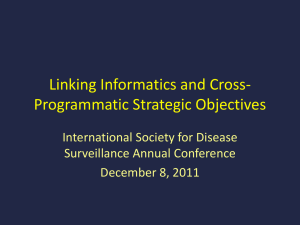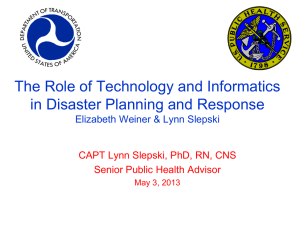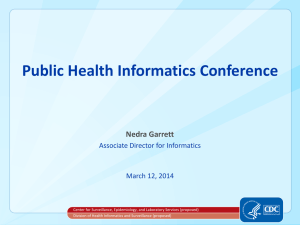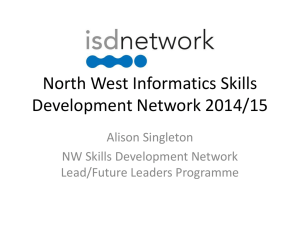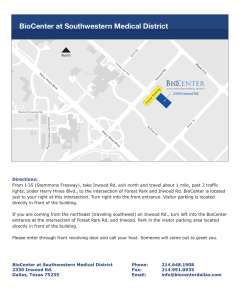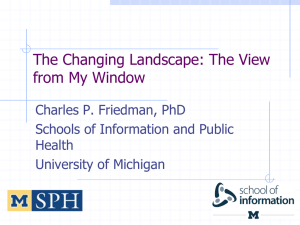Keynote Address - University of Utah Health Sciences
advertisement
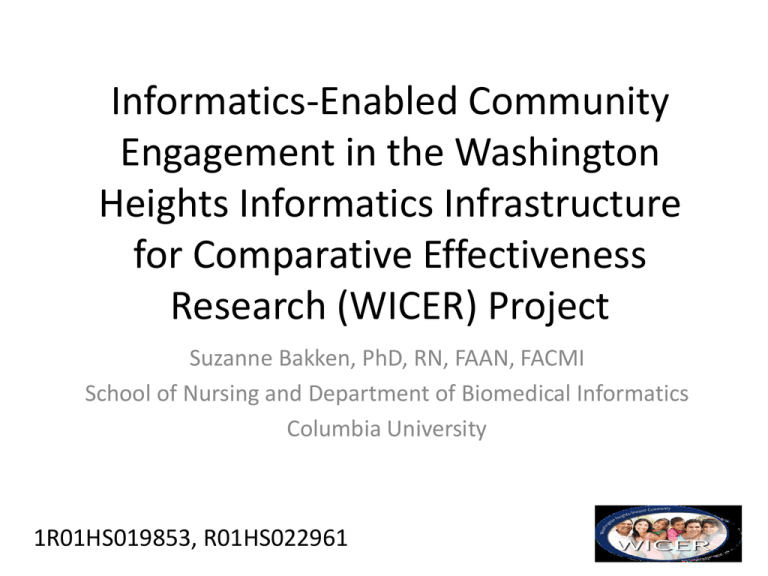
Informatics-Enabled Community Engagement in the Washington Heights Informatics Infrastructure for Comparative Effectiveness Research (WICER) Project Suzanne Bakken, PhD, RN, FAAN, FACMI School of Nursing and Department of Biomedical Informatics Columbia University 1R01HS019853, R01HS022961 Community Engagement in Context of the Learning Health Systems • Building a strong fabric of trust among stakeholders through communication and demonstration of value • Principles as a foundation for fabric of trust: – Build a shared learning environment – Engage health and health care, population and patient – Leverage existing programs and policies • Difficulty of building a strong fabric of trust among racial and ethnic minorities – Low participation rates in research studies – Low participation rates in biobanks – Limited use of information technologies for health-related purposes. Goals of WICER • Comprehensive understanding of the Washington Heights/Inwood population • Facilitate research with this population • Demonstrate infrastructure capabilities for comparative effectiveness research Washington Heights/Inwood • 5 zip codes: 10031, 10032, 10033, 10034, 10040 • Represents significant issues in health care disparities WICER Components • Research data warehouse - Wilcox • Research data explorer (RedX) and I2B2 for viewing research data warehouse – Wilcox • Informatics support for recruitment and integrating clinical and research workflows – Weng • Comparative effectiveness studies – Bigger, Feldman (Visiting Nurse Service of New York) • Community survey – Bakken, Boden-Albala, Fleck WICER Data In patient Clinician Clinical Encounters Out patient Clinician Community Members Integration Platform Research Data Access Research Data Warehouse RedX Home care Clinician Long term Patient Researcher Clinician Research Encounters Trial Coordinator Survey Coordinator Local Databases Data Access Expert Community Engagement • Survey design and implementation • Returning data to community • Role of informatics Community Survey • Demographics – Including socio-economic status • Anthropometric measures and vital signs – Blood pressure, height, weight, waist circumference • Surveys (incorporate selected PROMIS measures) including – – – – – – – – – Nutrition Physical activity Social role performance Health and illness perceptions Self health assessment Depression Medication adherence Quality of life Health literacy • Baseline and follow-up approximately 1 year apart • Some overlap with BRFSS and NYC Community Health Survey – Yoon eGEMS publication Survey Populations • Community – 3,940 • Ambulatory Clinics – 1,200 • Community Outreach Center – 800 Survey Design and Implementation • CTSA-funded Columbia-Community Partnership for Health (CCPH) • Free community blood pressure screening and education at CCPH • Focus groups to inform survey content • Data collection by bilingual community health workers from Washington Heights/Inwood in homes, community organizations, and local businesses as well as CCPH and clinics • Incorporation of snowball sampling methods • Compensation for participant time with incentives of value to residents (e.g., grocery coupons) • Asked about top health concerns Building a Strong Fabric of Trust • Participation rates in research studies – increased enrollment rates for WICER referrals to other studies • Participation rates in biobanks – exceeded biospecimen collection goals • Use of information technologies for healthrelated purposes – only 7% had used information technology for health purposes, but most participants agreed to linkage of survey data to clinical data Returning Data to the Community • Survey respondents • Community-based Organizations Returning Survey Data to Participants • Established WICER visualization working group that includes investigators from a variety of disciplines including nursing, medicine, public health, biomedical informatics, engineering, human factors, communication, art, fashion, theater • Creation of infographics of varying levels of complexity based on cognitive tasks • Focus groups regarding preference and acceptability • Basic research regarding comprehension • Applied research related to actionability in consumerfacing and provider-facing applications • Process reported in Arcia et al. AMIA 2013 Key Lessons from Focus Groups More is more Culture matters Your Blood Pressure Risks of High Blood Pressure Vision loss Hypertensive retinopathy Stroke Cerebrovascular accident Heart attack Myocardial infarction Blood vessel Damage Kidney failure Atherosclerosis Renal failure Days with Adequate Physical Activity in the Last Month 15 22 25 Jill Jones 54 years old 50-60 year-old females in Washington Heights 50-60 year-old females nationwide Physical Activity Jill Jones 54 years old 50-60 year-old females 50-60 year-old females nationwide in Washington Heights Pictorial bar graph Image from http://advgraphic2.blogspot.com/2011/01/icons-of-graphic-design.html Physical Activity Community-based Organizations • Focus groups • Elicitation of information needs and desired formats Informatics Approaches • Simple topic modeling • Community web site as mechanism of return of survey data to respondents • Electronic Tailored Infographics for Community Engagement, Education, and Empowerment (EnTICE3) The EnTICE3 Framework and Sample Infographic EnTICE3 Requirements Construct individual- and community- level visualizations ₋ adapt to change “change the color & size”, “replace star icons with banana icons”, “change the age group from 18-35 to 18-25”, ... ₋ reusable, generalizable “same bar graph, but using different survey variables”, “generate the bar graph for a different dataset”, “display this chart in another website”, “a different institution wants a similar visualization” EnTICE3 Requirements • Construct individual- and community- level visualizations ₋ adapt to change ■ ■ ₋ iterative approach prototype → production reusable, generalizable modular, generic services ■ web standards (HTML, HTTP) ■ web components (encapsulated interactive templates) ■ Governance Infrastructure Structures and processes that control data Query and extract ₋ Store new data ₋ Access control ₋ Audit access ₋ Underlies EnTICE3 and other components Conclusions • Significant barriers to research participation exist for populations at high risk for health disparities • Community engagement approaches essential to reach such participants • Ethical imperative to return data to those that contribute it in a way that is comprehensible and actionable for improving health • Important component of a learning health system • Requires continued engagement and iterative refinement

